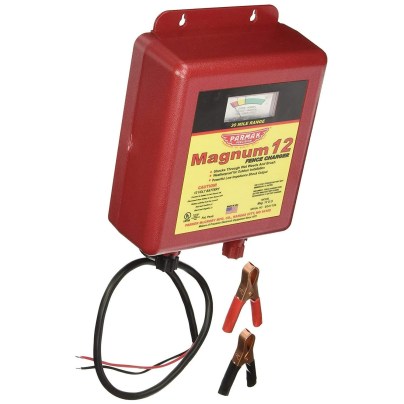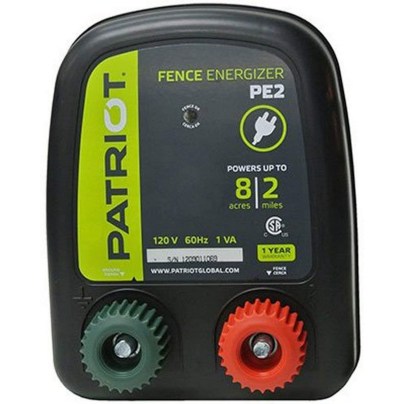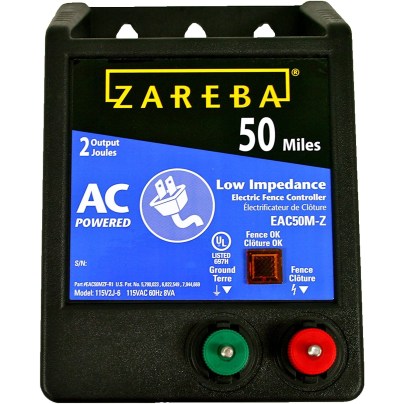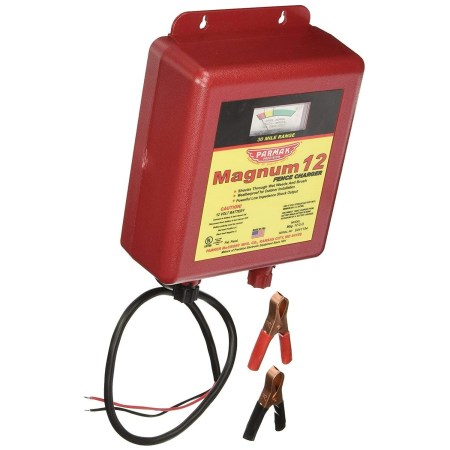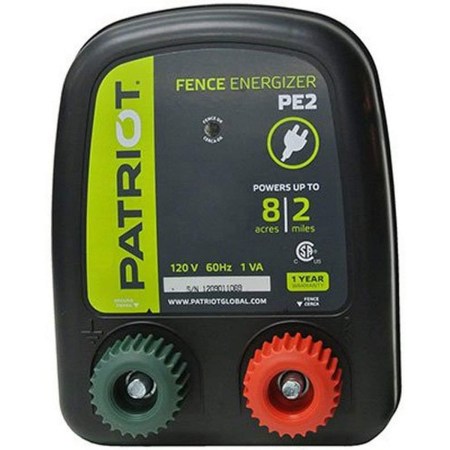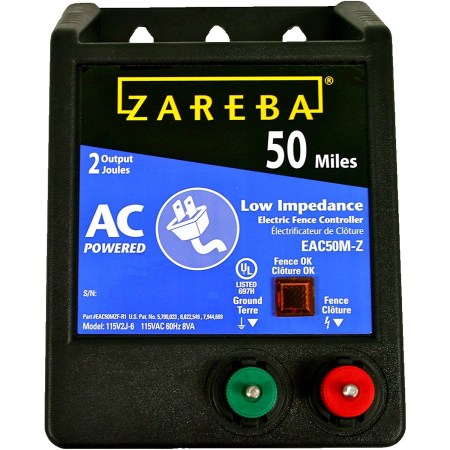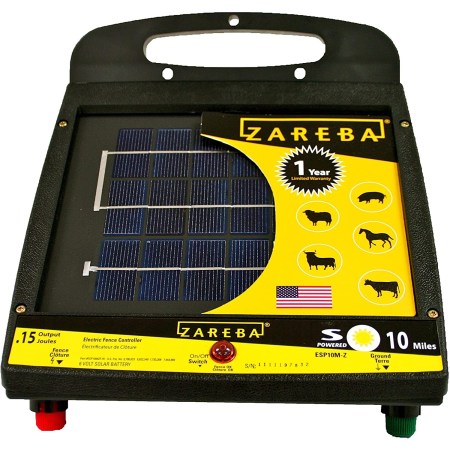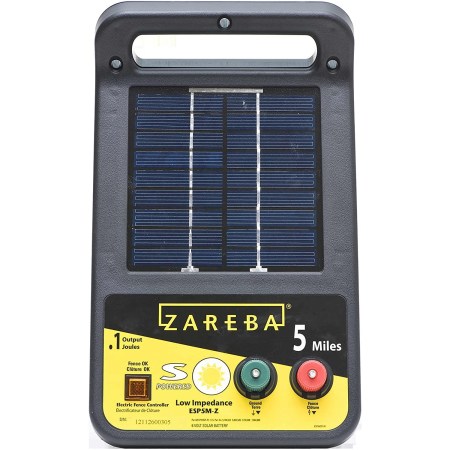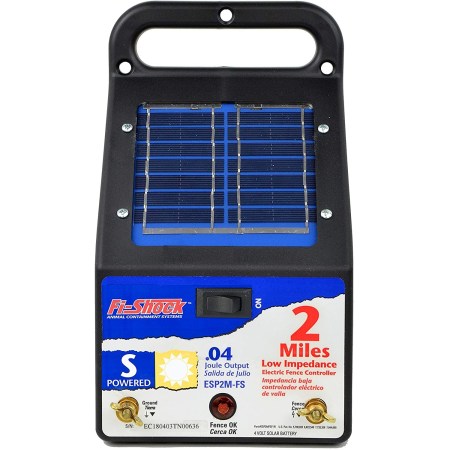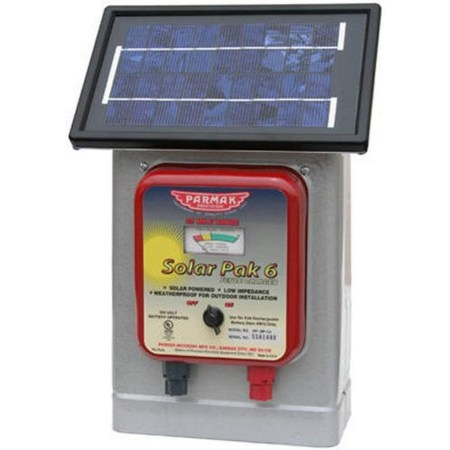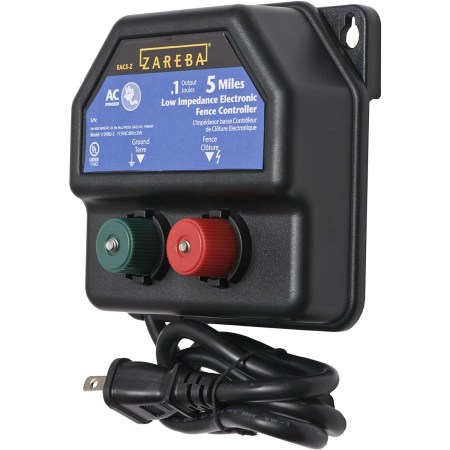We may earn revenue from the products available on this page and participate in affiliate programs. Learn More ›
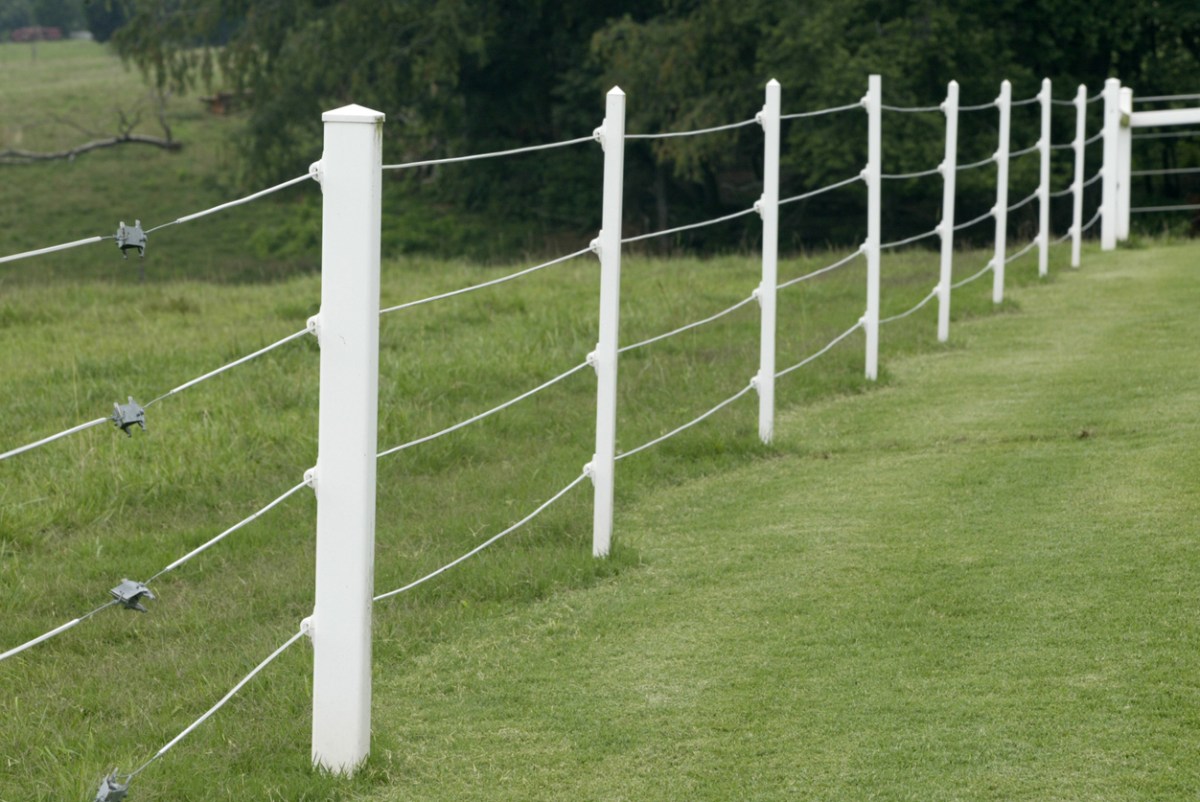
Your yard or property may be your sanctuary, but unfortunately, not every creature always agrees. Animals that like to graze on raised garden plants, vegetables, or even compost piles can’t read trespassing warnings, and they’ll think nothing of making a mess of your space.
While there are many fence materials that can help, electric fences can deter these pests in another way. But, keeping that fence energized requires the right electric fence charger. This guide can help you choose one of the best electric fence chargers for your needs based on size, power, and more, so keep reading to learn more about these handy gadgets.
- BEST OVERALL: Parmak 12-Volt Magnum 30-Mile Range Fence Charger
- BEST BANG FOR THE BUCK: Patriot PE2 Electric Fence Energizer
- BEST LONG-DISTANCE: Zareba EAC50M-Z 50-Mile-Range Electric Fence Charger
- BEST MEDIUM-DISTANCE: Zareba ESP10M-Z 10-Mile Electric Fence Charger
- BEST SOLAR: Zareba ESP5M-Z 5-Mile Solar Electric Fence Charger
- BEST FOR SMALL PROPERTIES: Fi-Shock ESP2M-FS 2-Mile Solar-Powered Fence Charger
- BEST UPGRADE: Parmak DF-SP-LI Solar 6-Volt 25-Mile Fence Charger
- ALSO CONSIDER: Zareba EA5M-Z 5-Mile AC-Powered Fence Charger
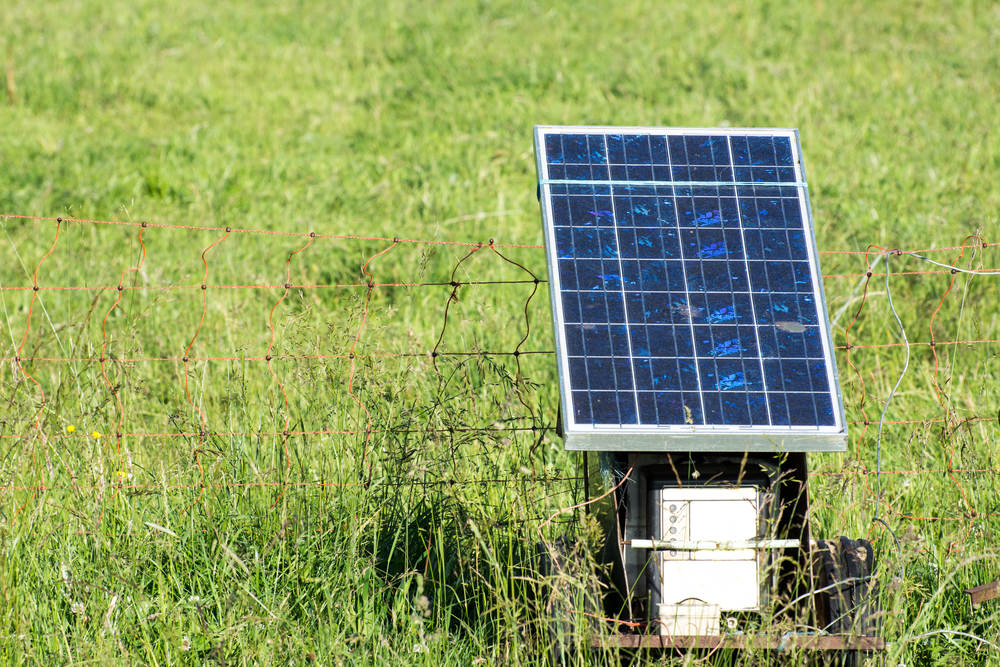
Types of Electric Fence Chargers
First, it’s important to understand how a fence charger works. A fence charger does not necessarily fill a battery like the name suggests, even though some can. It actually charges the fence with electric current. The main types include AC, DC, and solar.
AC (Plug-in)
There are electric fence chargers that plug directly into the electric grid feeding a property. These units are known as AC or plug-in chargers. They use the grid’s alternating current (AC) to push energy through the fence wires.
Generally, people set up these chargers inside a garage or a barn and then run the wires to the fenced-in area. But, it’s important to remember that the power has to be on for these chargers to work. If there’s a power outage or if a breaker trips, there won’t be any current flowing through the fence to keep livestock in or pests out.
AC units are the least expensive, and they typically have the longest ranges with some reaching as far 75 miles. But, figuring out where to plug them in can make installation a hassle.
DC (Battery)
While it might seem strange that an object as large as an electric fence can run off of battery power, that’s what a DC charger does. It converts power from a battery into the necessary voltage to power an electric fence system.
The wonderful thing about DC systems is that they can be set up anywhere, regardless of whether electricity is available. They work well around remote gardens, bee yards, and other similar setups. While the batteries do typically last a long time, often a month or so, they do require frequent checks to make sure the fence is operational. A tool like an electric voltage tester will do the trick.
Keep in mind that DC chargers are fairly easy to set up, though they’re a little more expensive than a comparable AC model, and their range is generally a little shorter, with the maximum distance typically 10 miles. If a system relies on DC power, consider purchasing two batteries with the system, so you’ll be able to swap the batteries when charging one, instead of leaving the fence disabled while charging.
Solar
If the electric fence is in a remote area, or you would prefer to keep an electric fence separate from the home, a solar-powered charger can be a good option. These units have photovoltaic panels on top that collect energy from the sun and store it in the battery. The stored energy is what powers the fence.
These units are excellent, as they’re lower maintenance than a DC system and not susceptible to power outages like AC units. However, checking on a solar-powered system weekly ensures that the panels are receiving enough sunlight. A curious critter could tip them over and weeds can grow and block sunlight. Most of these units can run for at least a week without any sunlight at all, but checking weekly is a good policy.
Solar units are typically the most expensive option, but they’re also the easiest to set up. Their range is similar to a DC option.
What to Consider When Choosing the Best Electric Fence Charger
The different types are just one aspect to consider when searching for the best electric fence charger. Some of the other most essential features to consider include how much power is needed, the size of the fence, and the location of the fence. The following characteristics can help narrow the options to make the best possible decision when shopping for an electric fence charger.
Joules
The easiest way to understand joules is the higher the number of joules, the more power the fence has. Livestock will often respect a low-output fence, as a quick shock is typically all it takes to remind them of their mistake. But wildlife is another story.
Depending on where you live, there might be a concern with animals like wild boars or bears. Both of these animals are tough and determined, with very strong nose senses that often overpower their decision-making abilities. They usually require a heavier shock to get their attention. Going with a higher-output, higher-joule fence is better in these situations.
Impedance
Impedance is less of a factor in electric fence decision-making today, but it’s still important to understand. Most modern units are low-impedance, which means they have plenty of power to correct a nosy animal, but they’re safe for fences in areas that might see plant overgrowth. This is important for larger fenced-in areas.
High-impedance chargers are no longer available, as they’re generally unsafe. The agricultural community knows these electric fence chargers by the term “weed burner,” as they were powerful enough to start fires when weeds would overgrow. They sent long pulses of high voltage electricity at low amperages, which could short out from weed growth and cause fires.
Pests and Predators
When it comes to pests and predators, certain types of animals require more of an electric jolt than others to send them packing.
- Small pests are rarely as determined as larger animals, so a small shock is usually all it takes for them to mend their ways. For these pets, a .05 joule-output charger is sufficient.
- Deer require a bit more energy to deter, with outputs between .10 and 1 joule being the best. Keep in mind that electric fences can be useless against a deer. However, many can jump 6-foot-high fences with ease, in which case the addition of a deer repellent might help.
- Predators and determined animals like foxes, coyotes, wild boars, and bears require a heavy hand. While they might do their best to outsmart a fence, a zap from a 2-plus joule electric fence charger will help deter them.
Fence Compatibility
Determining which model would make the best electric fence charger depends on its compatibility and the length of fence it can power. Most manufacturers provide a recommended distance, labeled in miles, for nearly every model. Since some chargers can power fences up to 75 miles, it’s likely that there’s a charger suitable for your property.
For smaller yards, most chargers will be more than sufficient, as they often feature at least a two-mile maximum rating. But a two-mile rating doesn’t necessarily mean that it works for a two-mile long fence. It’s important to remember to divide that distance by the amount of wires you’re installing.
For example, keeping deer, hogs, and small animals out of the fenced-in area might require a 5- or 6-foot fence with four sets of wire. For a two-mile charger, this setup can run a maximum linear distance of half a mile.
Location
While there are options when it comes to installing an electric fence charger, generally they are placed as close to the fence as possible. Though many units are weather resistant, manufacturers often suggest installing their units indoors to protect them from rain and snow, but this is often impractical. If you’re unable to install a charger indoors, many chargers have built-in brackets so they can be installed on a post. They also can be placed on a block to keep them off of the ground. Protecting them from snow or rain can be as simple as placing an upside-down bucket over the top.
Also, an electric fence needs to be grounded to work properly. Grounding includes driving a metal rod into the soil and clamping a wire from the charger to the rod. Extremely dry soil won’t conduct electricity as well as moist soil, so there is a chance that your fence won’t work optimally in dry areas.
Additional Features
Electric fence chargers are relatively simple devices, so they typically don’t come with many extra bells and whistles. Most units simply feature a light that indicates that the charger is working and charging the line. Should the power go out, the battery die, or a break in the fence occur, this light will go off.
Some solar-powered electric fence chargers do feature battery gauges. These gauges indicate how much energy is in the battery so you’ll be able to plan to recharge your battery when it’s low.
Our Top Picks
Shopping for the best electric fence charger can be challenging, but the following list can help. It’s a collection of some of the best electric fence chargers on the market based on specific situations. Be sure to keep all of the top considerations in mind while comparing these products in order to make an informed decision. All of the following chargers are low-impedance models.
Best Overall
Parmak 12-Volt Magnum 30-Mile Range Fence Charger
See ItParmak’s Magnum 30-Mile Electric Fence Charger is worth considering for most sizes of properties dealing with pests. This 12-volt charger attaches to a battery and will charge an electric fence for up to three months at a time. And, with its 30-mile range, it has the power to run several sets of wire across some very large properties.
The Parmak has a weatherproof design. It can mount directly to a fence post, making installation straightforward. It also has a built-in gauge that removes the guesswork involved in monitoring whether the fence is working. It comes with a set of clip-on clamps for attaching to a variety of battery terminals.
Product Specs
- Power Source: 12 volt battery
- Range: 30 miles
- Output: 3.1 joules
Pros
- Uses 12-volt battery which could last up to 3 months
- Charges up to 30 miles of electric fence
- Includes a built-in performance meter
- Powerful shock capacity for large and small animals
Cons
- No adjustment to wattage
- Not as weatherproof as described
Get the Parmak fence charger on Amazon and at Walmart.
Best Bang For The Buck
Patriot PE2 Electric Fence Energizer
See ItIt doesn’t take a big budget to keep persistent pests off a property. Patriot’s PE2 Electric Fence Energizer might be a good choice for anyone looking to maintain a tight budget without sacrificing ability. This plug-in electric fence charger is powerful enough to cover up to two miles of wire, or a total area of eight acres.
This fence produces enough energy to turn tough pests around. The .10 joule charger plugs into a standard 110-volt outlet in a garage or a barn to supply constant power for fences on smaller properties. It also has a built-in light that indicates when the fence is working properly.
Product Specs
- Power Source: 110 volt AC plug-in
- Range: 2 miles
- Output: 0.1 joules
Pros
- Charges up to 2 miles of electric fence
- Up to 5,000 volts with no load
- Shock is most effective for smaller animals
Cons
- Might need to add more grounding rods
Get the PATRIOT fence charger at Amazon, Tractor Supply, Walmart, The Home Depot, and Lowe’s.
Best Long-Distance
Zareba EAC50M-Z 50-Mile-Range Electric Fence Charger
See ItWhen it comes to finding an electric fence charger that produces a strong jolt around large properties, it’s hard to beat Zareba’s AC-Powered Fence Charger. This AC-powered fence charger has a 50-mile range, making it suitable for large properties or small ranches with a few laps of wire.
Not only does the Zareba cover a large property, but it also gives a strong jolt with its 2-joule output. The Zareba also has a built-in power indicator that lights up to display that the fence is working properly. It’s both weather- and moisture-resistant, which means it can stay outside, though it might do best when sheltered from rain and snow.
Product Specs
- Power Source: AC plug-in
- Range: 50 miles
- Output: 2 joules
Pros
- Charges up to 50 miles of steel or aluminum electric fence
- 2 joules puts out a powerful shock
- Works well for larger animals
- Weather-resistant case
Cons
- Shock is extremely powerful if you accidentally touch it
- Only powers up to 25 miles of poly strands
Get the Zareba fence charger on Amazon, Zareba, Walmart, The Home Depot, and Lowe’s.
Best Medium-Distance
Zareba ESP10M-Z 10-Mile Electric Fence Charger
See ItFor properties that need plenty of power but don’t require the long legs of a larger charger, Zareba’s Solar Fence Charger might do the trick. This solar charger provides .15 joules of energy over a length of up to 10 linear miles, covering medium-size properties with several lengths of wire. And, it can run for up to two weeks in total darkness, offering some reassurance even during cloudy days.
The ESP10M-Z has a slotted mounting bracket built into the unit for sliding over a fence post, taking any guesswork out of installation. It also has a built-in on-off switch that lights to indicate that the fence is operating properly.
Product Specs
- Power Source: Solar
- Range: 10 miles
- Output: 0.15 joules
Pros
- Charges up to 10 miles of electric fence
- Solar battery can run for 2 weeks
- T-post mounting brackets included
- Puts out 0.15 joules of electricity for large animals
Cons
- Might not shock much if improperly grounded
Get the Zareba solar fence charger at Amazon, Zareba, Lowe’s, The Home Depot, and Walmart.
Best Solar
Zareba ESP5M-Z 5-Mile Solar Electric Fence Charger
See ItSetting up a solar charger can be a hassle, as it can become blocked by grass on the ground or hard to position for ideal sunlight. Zareba’s ESP5M-Z Solar Fence Charger solves that problem entirely. It mounts on top of a fence post, and it swivels 360 degrees, allowing installers to position it perfectly the first time.
The ESP5M-Z provides up to five miles of coverage, making it ideal for smaller properties. Its built-in photovoltaic panel charges the onboard battery via sunlight, allowing it to operate for up to two weeks in total darkness. It also has a built-in indicator to display when the fence is working correctly, though there is not a built-in gauge.
Product Specs
- Power Source: Solar
- Range: 5 miles
- Output: 0.1 joules
Pros
- Charges up to 5 miles of electric fence
- Solar battery can run for 2 weeks
- T-post mount rotates 360 degrees to keep in the sun
Cons
- Might not shock much if improperly grounded
Get the Zareba solar fence charger at Amazon, Zareba, Lowe’s, The Home Depot, and Walmart.
Best For Small Properties
Fi-Shock ESP2M-FS 2-Mile Solar-Powered Fence Charger
See ItFor smaller properties and gardens dealing with small pests, Fi-Shock’s ESP2M-FS Solar-Powered Fence Charger is worth a look. This electric fence charger can energize fences up to two miles long, offering plenty of coverage for multiple laps around a small property.
The Fi-Shock produces up to 8,000 volts of electricity at .04 joules, immediately turning around pesky pests like skunks, raccoons, and rabbits. It has a built-in solar panel that charges the onboard battery for up to two weeks of run time in complete darkness. It also has a front-mounted on-off switch as well as an indicator light for checking the charger and fence status with a glance.
Product Specs
- Power Source: Solar
- Range: 2 miles
- Output: 0.04 Joules
Pros
- Charges up to 2 miles of electric fence
- Solar battery runs for up to 2 weeks without sun
- Not as susceptible to battery drain from weeds and grass
Cons
- Requires three grounding poles to work
Get the Fi-Shock fence charger on Amazon.
Best Upgrade
Parmak DF-SP-LI Solar 6-Volt 25-Mile Fence Charger
See ItFor a low-maintenance fence-charging option, check out Parmak’s DF-SP-LI Solar Pak 6-Volt Fence Charger. This solar-powered charger features a built-in photovoltaic panel for absorbing sunlight, converting it into usable electricity to store in the 6-volt battery. Once charged, the battery will run this unit for up to 21 days in complete darkness.
The Parmak also has a massive range, covering up to 25 linear miles of wire, offering the ability to run several lines around the yard’s perimeter. It also features a built-in voltage output meter, indicating the fence voltage, but it also can indicate battery level for quick reference.
Product Specs
- Power Source: Solar
- Range: 25 miles
- Output: 1.4 joules
Pros
- Charges up to 25 miles of electric fence
- Puts out 1.4 joules of electricity
- Maintains shock even with wet grass
- Built-in performance meter
Cons
- Battery has a shorter life than expected
Get the Parmak fence charger on Amazon and at Walmart.
Also Consider
Zareba EA5M-Z 5-Mile AC-Powered Fence Charger
See ItWhen simplicity is a priority, don’t overlook Zareba’s EA5M-Z Electric Fence Charger. This AC-powered charger plugs into a standard outlet in a house, a garage, or a barn, producing .1 joule of energy to keep smaller pests out. And, with its five-mile capacity, it can power a fence lapped several times around a property.
Zareba made the EA5M-Z very easy to install. It has two mounting holes for screwing to a wall or post as well as two terminals in the front for tying the system together. While it is weather resistant, it’s not weatherproof, so it’s best to install it in a sheltered area to protect it from rain and snow.
Product Specs
- Power Source: AC plug-in
- Range: 5 miles
- Output: 0.1 joules
Pros
- Charges up to 5 miles of electric fence
- Puts out 0.1 joules
- Weather-resistant housing
- Works for small or medium-size animals
Cons
- Might not shock much if improperly grounded
- Not good for large livestock
Get the Zareba fence charger at Amazon, Zareba, The Home Depot, and Walmart.
Our Verdict
The best electric fence chargers help users keep pets and livestock in and wild animals and pests out of certain areas. For a reliable electric fence charger, we recommend the Parmak 12-Volt Fence Charger as it’s capable of covering a large or small area, includes a battery, and has a built-in performance meter to monitor the fence status.
If you need an electric fence for smaller animals, opt for the Patriot PE2 Electric Fence Energizer.
How We Chose the Best Electric Fence Chargers
The size of the area that needs to be properly electrified is a primary factor for choosing the best electric fence charger. To accommodate a range of needs, we included a number of products that can cover 2 to 50 miles, which helps livestock owners and pet owners alike. The amount of power or joules that the electric fence charger puts out is also important, since a low-power unit won’t affect a horse or a bear. Our list has several units that have low output and several with powerful output to keep any wandering creatures in or out as needed.
We narrowed our research to also include standard electrical chargers and some solar chargers. In regions with plenty of sun, solar electric fence chargers are cost-effective, and they include a battery to operate for several cloudy days. It’s also a helpful method for remote areas without electricity. Finally, we chose several units that work with any type of electric fencing and some that work best with steel as opposed to poly wires.
FAQs
If you still have some questions about the best electric fence charger, this section is for you. It’s a collection of answers to some of the most common questions about electric fence chargers.
Q: How do I choose a fence charger?
Choosing the best electric fence charger might come down to a few factors: where the fence is located, how long the fence is, and how much power it needs. For remote fences, battery- or solar-powered options are best. For tough pests, higher power outputs are necessary.
Q: What does joules mean in fence chargers?
Joules is a measurement of energy. It is calculated using this formula: voltage x amps x time. Essentially, the higher the joules, the more powerful the device.
Q: How many joules should my fence charger have?
For smaller pests, a joule rating of .05 is typically sufficient. For larger pests like deer, .15 is usually enough. For larger pests like bears and hogs, 2 joules or more might be necessary.
Q: How many joules is dangerous?
Once joule ratings near 10 joules, the current is considered dangerous.
